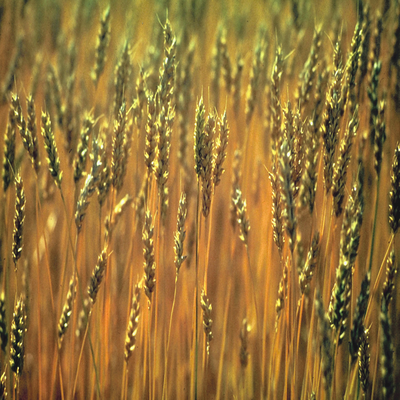Whole Grains

Every day of the week I talk to people who say that they do not have time to eat a healthy diet or hunt for the right type of victuals, and so off they go to the health food store to buy some capsules.
How many advertisements have you seen for some capsule or powder that gives you all the nutrients and fiber that you need? But think about that for a moment: does that make sense? For millions of years our far-distant ancestors co-evolved with the plants and minerals around them. So does it make sense that we can pull out one dietary component and ignore the rest? Or that the berries of some plant growing thousands of miles from early humankind could contain some magic potion that will solve all of our problems? That would imply a rather capricious Universe that only wants you to find that essential something when you have the money and the wherewithal to find.
Back when the world was new – well, come to think, it was 1974 – I was impressed to see some early data that showed dramatic differences between the exquisitely balanced nutrient profile of an orange compared with commercially prepared orange juice. A few years later we even did a bit of research on the subject.
This topic has re-emerged with some new research that has received justified plaudits from experts at the American Institute for Cancer Research. The study has indicated that whole grain fiber rather than fiber from other food sources, is associated with lower risk of colorectal cancer.
The study was recently published in the American Journal of Clinical Nutrition and found that consumption of whole grains was associated with lower risk for colorectal cancer. The same study found no significant link between consumption of fiber from other food sources and colorectal cancer risk.
Researchers at the National Institutes of Health analyzed survey results from a huge prospective cohort study called the NIH-AARP Study involving more than 291,000 men and 197,000 women aged 50 to 71.
The scientists analyzed the participant’s intake of fiber from many different food sources, but only fiber from whole grains was associated with lower risk of colorectal cancer. In the study, those subjects who ate the most whole grains had a 20 percent lower risk of colorectal cancer than those who ate the least.
The observed protective effect of whole grain consumption was stronger for rectal cancer, with a 35 percent lower risk.
Experts have been following the conflicting and often contradictory findings on fiber and colorectal cancer for years.
Much of the previous research simply measured the participants’ total fiber intake. The trouble is that so much of the American diet is now made up of heavily processed grains in foods like pasta, cereals and breads, so “Fiber” is a really mixed bag. So it seemed that it might be helpful to distinguish between different food sources of fiber.
Let’s have a quick refresher course. All grains, from the familiar, like wheat, oats, rye, corn, to the less well known such as barley, bulgur, millet, quinoa start out as kernels. The bran is the outermost layer of the kernel, and that is where most of the fiber is found. The germ lies at the center of the kernel, and that is where most of the vitamins, minerals and fatty acids reside. In between the brain and the germ lies the endosperm, which contains a few vitamins and minerals and most of the starch.
Because the refining process removes the bran and germ, the main component of white bread and other products made from refined grains or white flour is starch. Whole grain products are darker and chewier than refined grain products is because all three layers of the kernel are ground together to make whole grain flour. This provides the kernel’s full complement of protein, fatty acids and a range of phytochemicals. Most importantly, perhaps, the fiber content of whole grains can be as much as four times that of refined grains.
The evidence connecting consumption of whole grains to reduced risk for cancer, cardiovascular disease, stroke and diabetes comes chiefly from population studies and laboratory work. Only recently have researchers begun to identify specific ways a diet high in whole grains promotes health.
In February 2006 a study also published in the American Journal of Clinical Nutrition found that a high whole-grain intake had a number of objective effects on physiological markers – homocysteine, plasma markers of glycemic control (fasting insulin, hemoglobin A1c, C-peptide, and leptin), lipids (total cholesterol, triglyceride, HDL cholesterol, and LDL cholesterol), and inflammation (C-reactive protein, fibrinogen, and interleukin 6 – that may be associated with both diabetes and cardiovascular disease almost all improved and none became worse.
The evidence for whole grains specifically lowering cancer risk is less strong. However, in 2003 European Prospective Investigation into Cancer (EPIC) prospectively examined the association between dietary fiber intake and incidence of colorectal cancer in 519,978 individuals aged 25 to 70 years, recruited from 10 European countries. The data showed that high consumption of fiber (from fruits, vegetables and whole grains) reduced risk for colon cancer by 25 percent.
Although most experts have been recommending “whole grain foods” for years, this new study finally proves that the fiber that we get from whole grains is different from the fiber we get from “starchy” foods like white bread and processed cereal, and that these differences are not only important for the vascular system and diabetes, but also for cancer risk.






